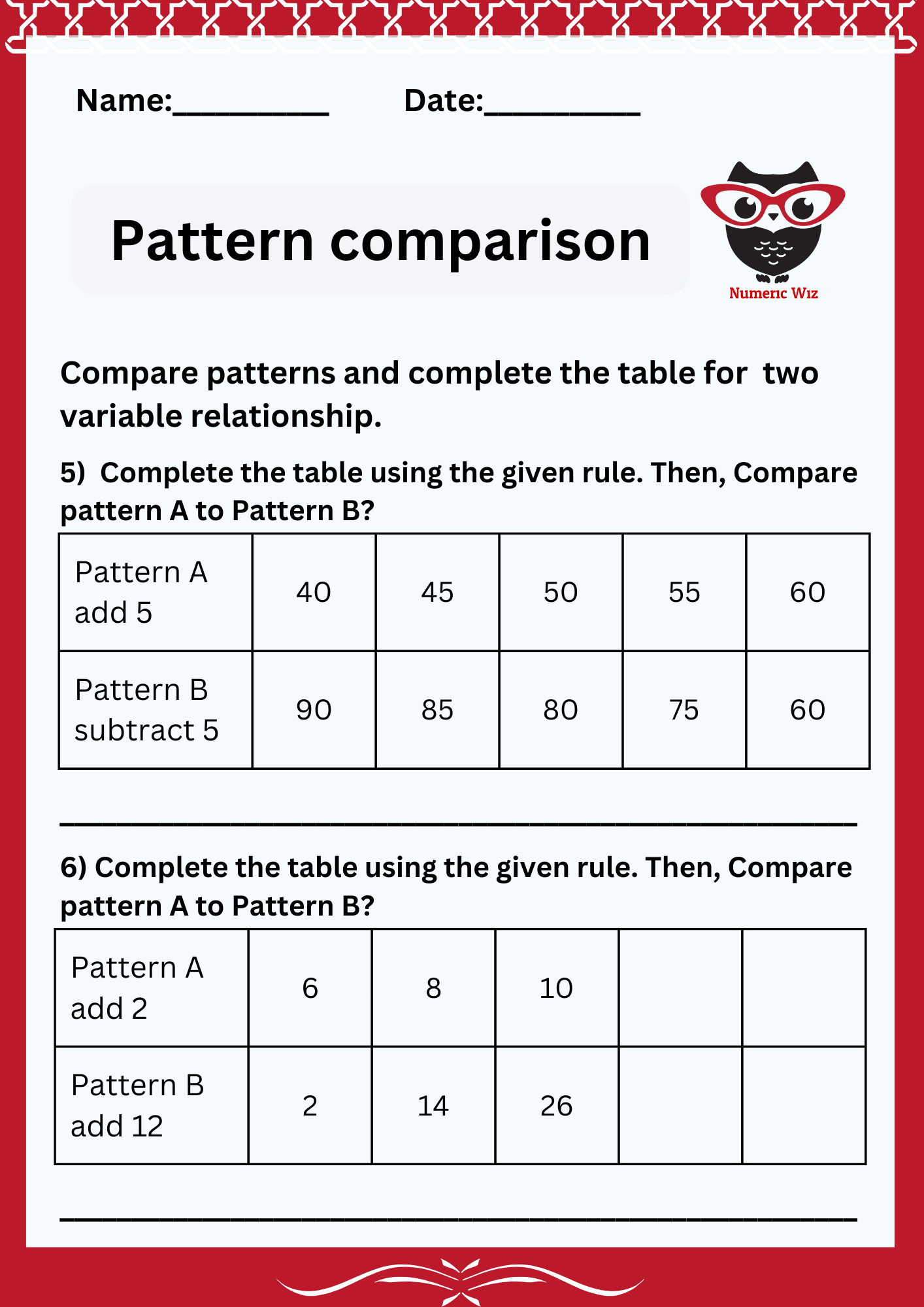
Analyzing Patterns and Relationships
In Grade 5, students learn to analyze patterns and relationships in mathematics. This involves generating numerical patterns based on specific rules, identifying relationships between the patterns, and representing them as ordered pairs on a coordinate plane.
To generate patterns, you start with a rule that tells you how to create the next number in the sequence.
Let’s say we have two rules:
Using these rules, we can create two patterns:
Now, we look at the corresponding terms from both patterns:
Analyzing patterns helps students understand relationships in math and real-life situations. It develops critical thinking and problem-solving skills, which are important for more advanced math concepts.
Let’s practice together by creating our own numerical patterns!
For a limited time
